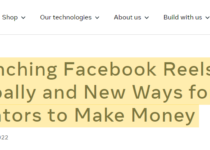What Is Programmatic SEO?
You’ve heard of SEO, of course, but have you heard of programmatic SEO (pSEO)?
This once little-known method of creating high-ranking content at scale is being adopted by increasing numbers of businesses who use it to dominate search results related to their industry and significantly increase their organic traffic.
In this guide, you’ll learn how pSEO works, how it differs from traditional SEO, and the pSEO tools and technologies needed to generate hundreds of unique, high-quality programmatic pages all from a single template and database.
What Is Programmatic SEO?
Programmatic SEO (also known as pSEO) is the process of using automation, keyword targeting and data analysis to create and optimize a large number of high-ranking landing pages at scale to boost search engine rankings.
This process makes it easy for businesses to rank for hundreds of different searches related to their products or services by creating a huge list containing hundreds of long-tail keywords. They’ll often use different combinations of head terms (“running shoes,” “hotels in France,” etc.) and modifiers such as “best” (as in “best running shoes for beginners” or “best luxury hotels in France.)”.
Those implementing programmatic SEO will then create unique content tailored to each new keyword before using automation to import each keyword-optimized piece of content into its own landing page.
Key Concepts of Programmatic SEO
To understand how pSEO works, it’s useful to know about the key concepts and principles underlying it and how they fit together to create this unique approach to SEO content generation.
These concepts include:
1) Low-Difficulty Keywords
As we’ll note throughout this guide, pSEO works best for targeting keywords that have low competition, making them easier to rank for without human input.
You’ll know about keyword difficulty (KD) if you’ve ever used top SEO tools like Ahrefs or the Keyword Magic Tool from Semrush. These tools assign each keyword a difficulty score out of 100, with 100 being the most difficult to rank for and 1 being the easiest.
Here, for example, you can see that a search for “top hotels in Charlotte” has a very low KD score of 5, making it a prime target for the kind of programmatic SEO content used by travel giants like TripAdvisor:
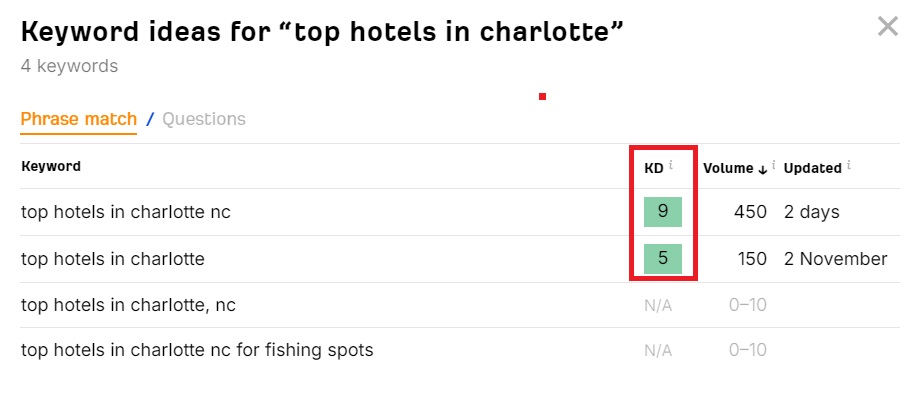
2) User Intent
If you read How to Understand User Intent, you’ll know that search queries can be categorized as meeting one of four different types of audience intent:
- Informational: The user wants to learn about a specific subject or find out how to do something.
- Navigational: The user wants to navigate to a specific page or resource on the Internet.
- Commercial: The user is looking to buy a particular type of product or service and are currently researching their options before making a purchase.
- Transactional: The user is ready to make a purchase.
pSEO generally works best for targeting transactional or commercial intent keywords, attracting users who are ready to buy.
By creating programmatic pages that meet these types of search intent right at the beginning, you make it clear to your users that they’ve found a useful source of information that can help them, meaning they’re more likely to stick around and engage with your content.
3) User Experience
If you’re going to use programmatic SEO effectively, you can’t afford to focus solely on the content. You also need to carefully consider the design, mobile-responsiveness, and overall performance of your landing pages.
These three essential user experience factors can make or break the success of your programmatic SEO strategy.
Not only does Google prioritize pages that deliver a seamless and positive user experience, but making critical user experience mistakes can also cost you engagement and, in turn, revenue.
That’s why, when you’re creating your landing page template, you need to make sure that it loads fast and functions correctly on all devices and screen sizes.
4 Examples of Companies Using pSEO
Chances are you’ve already seen lots of programmatic SEO pages at work even if you didn’t immediately recognize them as such.
1) TripAdvisor
Travel sites like TripAdvisor typically use them as it helps them rank for specific keywords relating to thousands of different travel destinations which, as you can image, are almost never-ending.
Search for “top hotels in Pensacola,” for example, and you get this page as one of the top results:

Run a search for “top hotels in New York City,” and you’ll notice that these two pages are identically laid out:
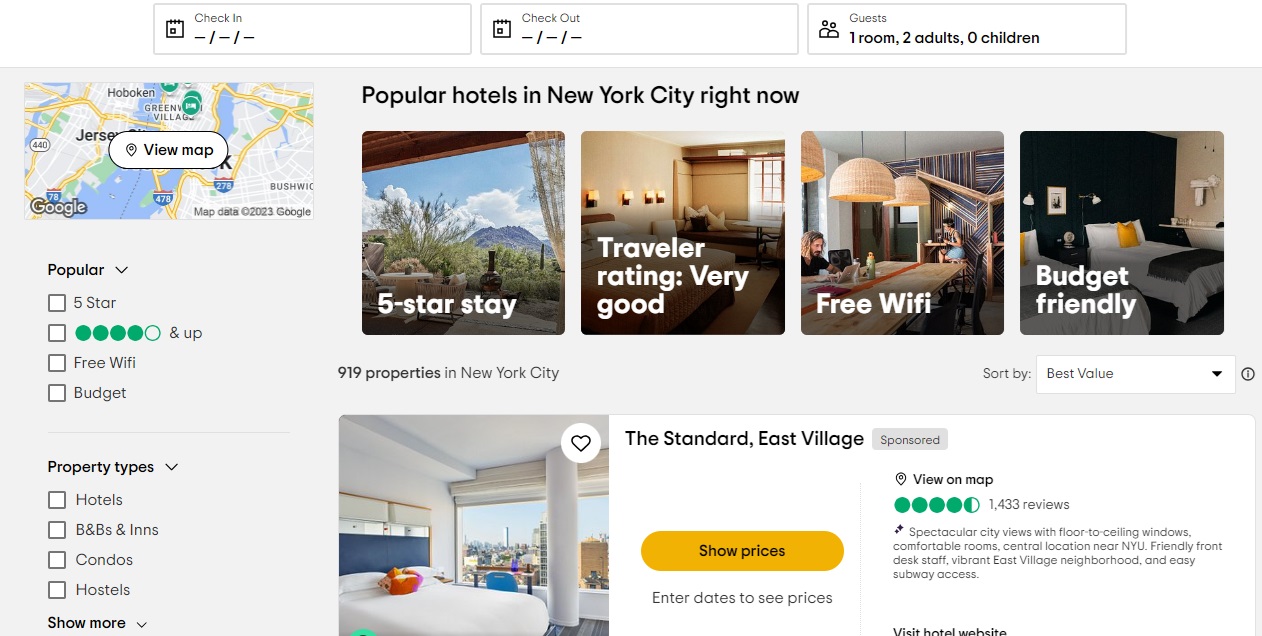
That’s because both of these pages, and countless others that TripAdvisor uses to target “top hotels in [destination],” are all generated from the same template and populated with different content that’s relevant to each keyword.
3) Realtor.com
Realtor.com is another great example of how pSEO can be used to automatically generate high-ranking content targeting similar long-tail keywords in different locations.
A quick search for “homes for sale in Orlando FL” presents Realtor as the first search result:

Click on that result, and you’ll note that the page looks identical to their page for “homes for sale in Charlotte NC” and most other locations:
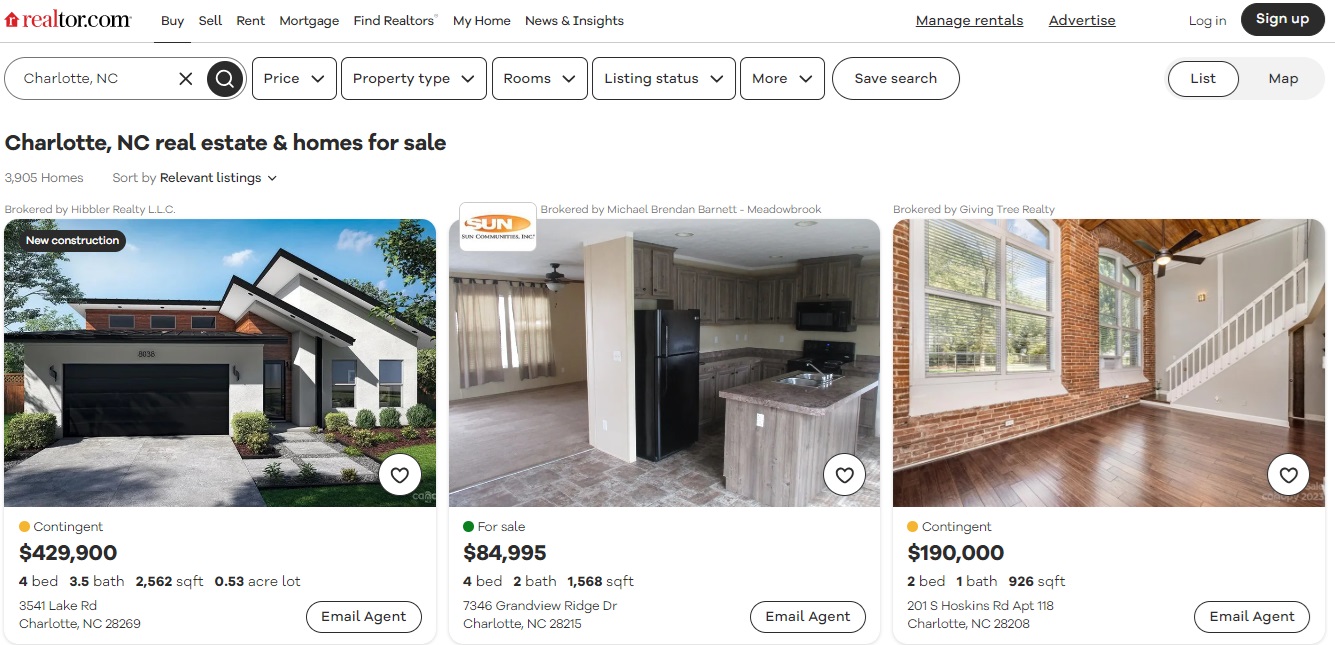
This continues all the way through each page, where you’ll find that pSEO has also been used for creating content targeting other specific search queries such as “[location] homes with special features”:
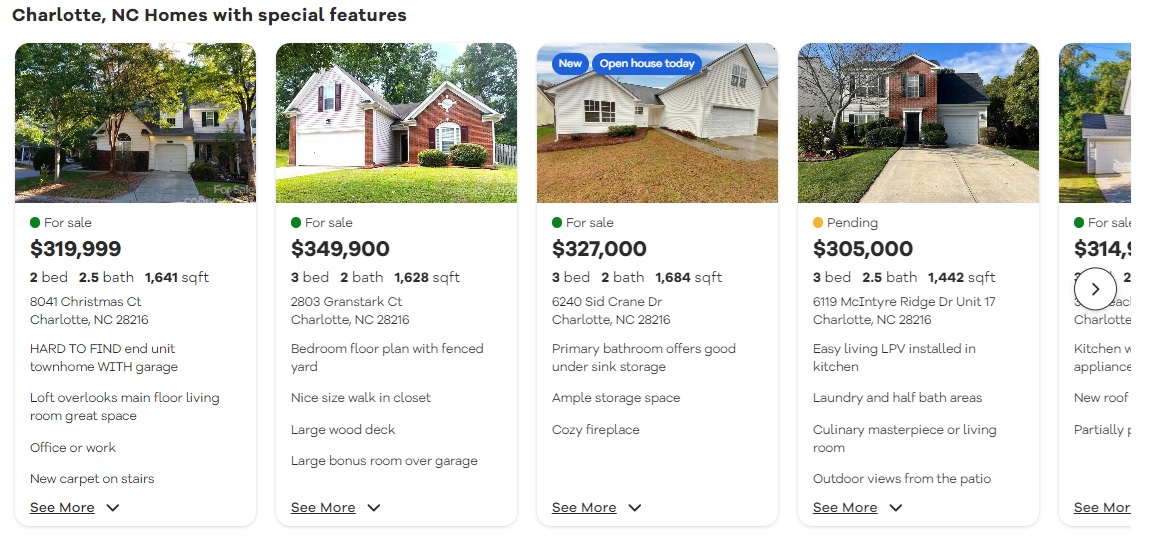
3) Canva
Design app Canva is a great example of how Software as a Service (SaaS) can deploy programmatic pages to reach and attract users with different needs.
They use the same landing page layout for all search terms, including words like “builder” or “maker,” that are relevant to their service. For instance, here’s “How to make a resume”:
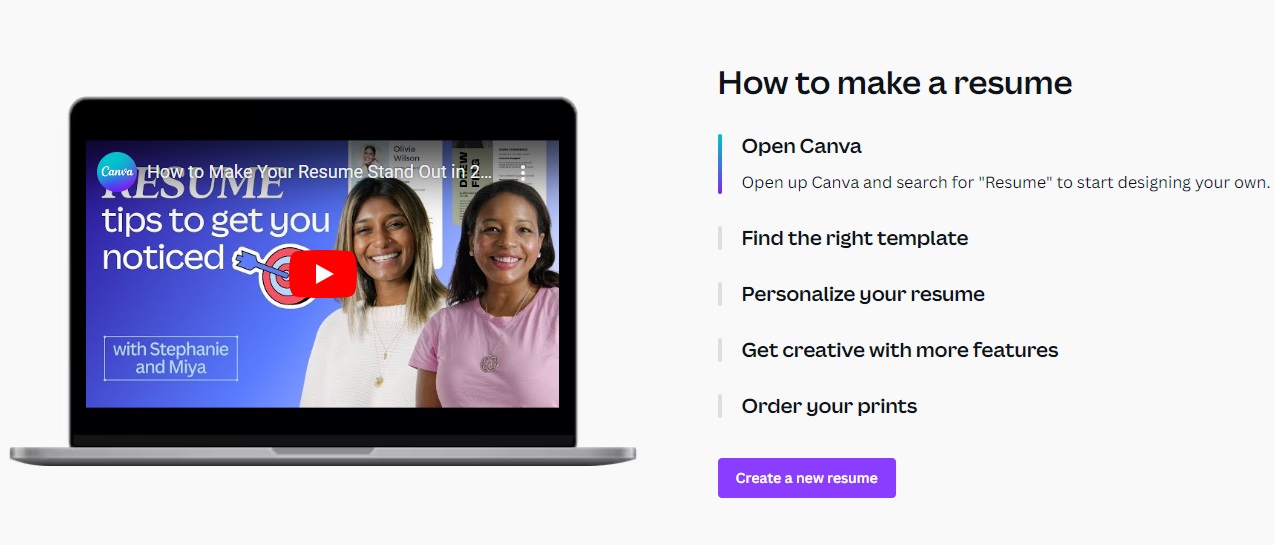
And here we find “How to make a logo”:

The only difference is that each page features visual and written content that is tailored to each user’s (and each page’s) needs.
4) NerdWallet
We can look to NerdWallet to show us how programmatic landing page creation can be used to target commercial investigation keywords.
The consumer comparison site occupies a prime position in search results for keywords related to the term “best credit cards,” such as “best credit cards for rewards” and “best balance transfer credit cards.”

Understanding Search Algorithms and Their Evolution (AI, ML)
Search algorithms are the primary way that search engines determine how content is ranked and displayed in the SERPs.
Using a combination of AI (Artificial Intelligence) and Machine Learning (ML), these algorithms ensure that users find the most relevant and high-quality information when they conduct a search. They sift through vast amounts of data, evaluating content based on factors such as:
- Relevance to the search term
- The user experience of the website
- Content quality
Of all the factors at play in determining how your content is ranked, it’s this last one that has become increasingly important over the course of the past several years as Google continues to refine its algorithms in order to prioritize content that provides maximum value for its readers.
In 2011, for example, Google first introduced the much-publicized Panda update to identify content that was written primarily to game their systems through blackhat tactics like keyword stuffing, and penalize them with lower or non-existent search rankings.
A year later, the Penguin update was used to weed out sites employing unnatural backlinking practices before Google BERT came along in 2019 with enhanced natural language processing, which improved understanding of search intent and context.
These algorithmic updates have marked a significant shift in SEO from keyword-centric strategies to content-driven approaches. Google now prioritizes content quality, user experience and semantic relevance over keyword density and backlink quantity – and this is something that programmatic SEO is well-equipped to help with by combining a UX-centric template design.
Differences Between Traditional SEO and Programmatic SEO
Programmatic SEO and traditional SEO are essentially two different methods for achieving the same result: Increasing your visibility in search results and getting more traffic to your website.
However, the way they achieve this is quite different.
With regular SEO, you target one keyword at a time, whereas with pSEO, you do keyword research to find hundreds of related keywords and target them more or less at once.
This approach works best for low-competition keywords with commercial and transactional intent that typically have a low search volume, whereas regular SEO can work just as well for meeting those types of user intent as it can for informational and navigational intent:
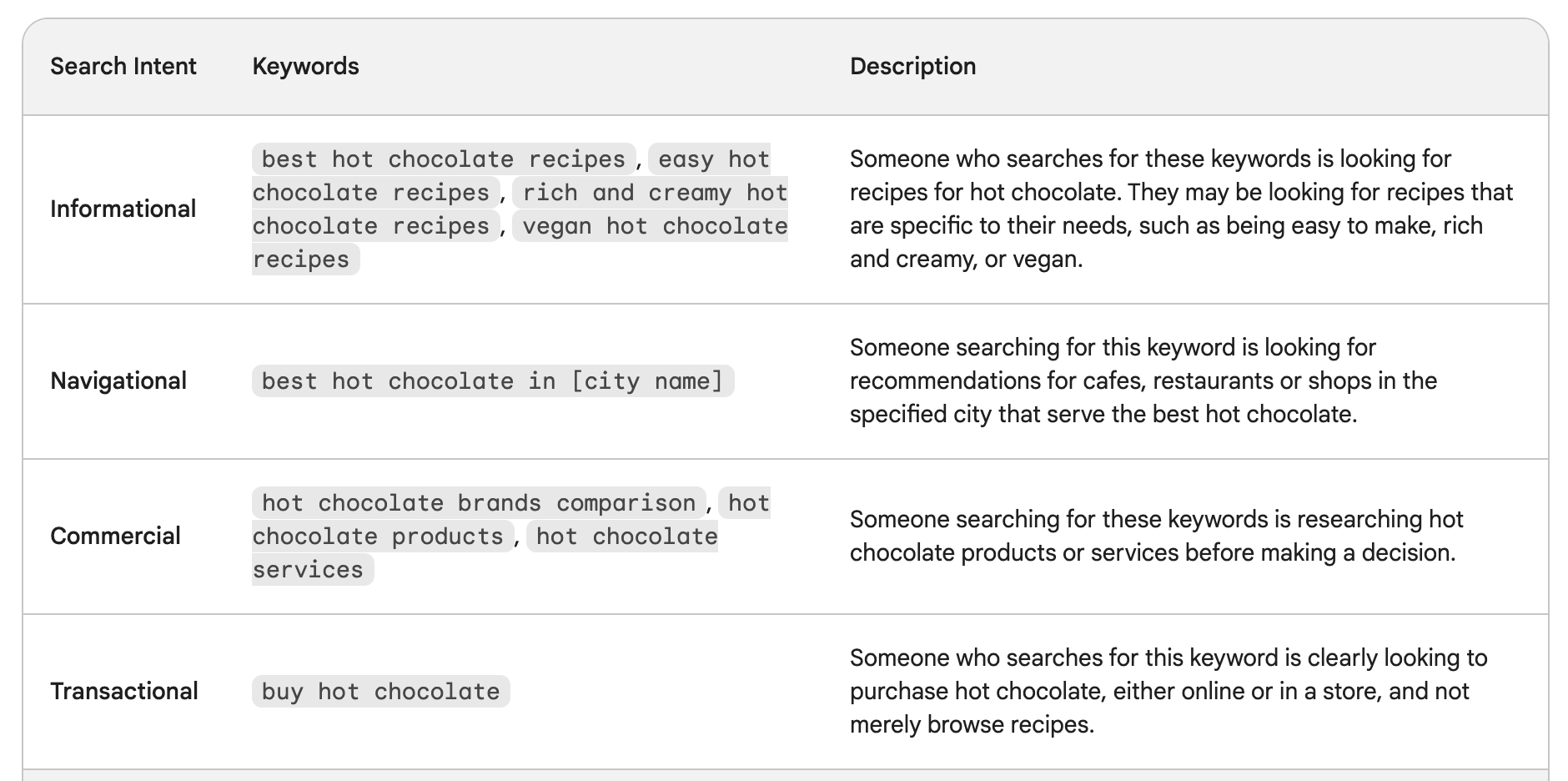
What’s more, with regular SEO, you can also make informed decisions about whether to go after those high-competition, high search volume keywords.
Finally, the approach to building landing pages is very different. Typically, you’d manually create a new page for each new piece of content. With pSEO, however, you create one page as a template, and then use automation to duplicate that template for each new target keyword and populate it with pre-created content and metadata.
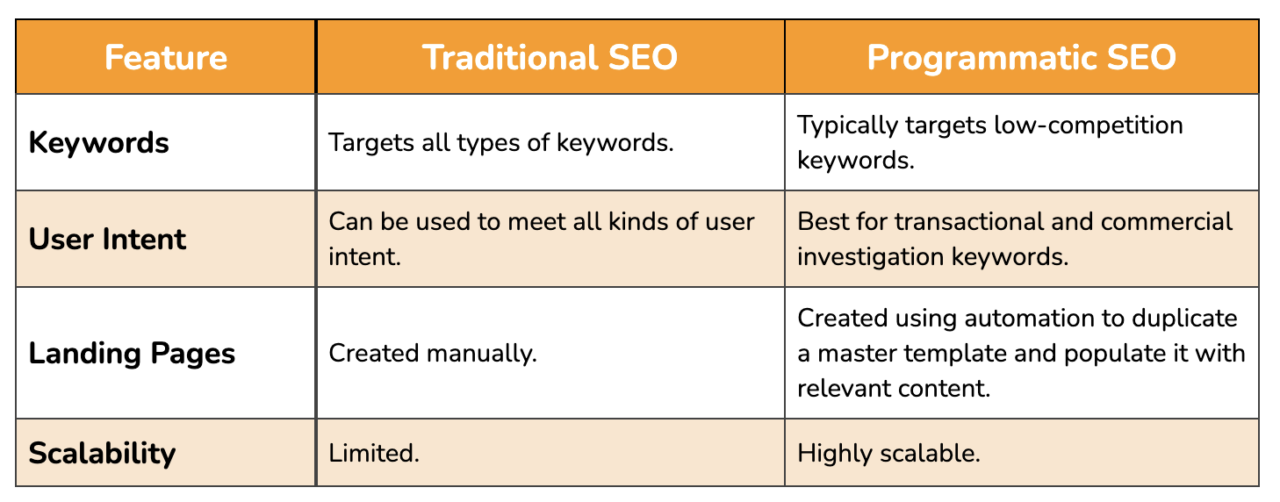
Benefits & Challenges of Programmatic SEO for Businesses
Programmatic SEO presents a unique set of opportunities and hurdles for businesses aiming to enhance their online presence. Although it’s great for efficient scaling of content and targeting, understanding its benefits and challenges is crucial if you want to achieve your desired SEO outcomes.
Benefits of pSEO
First, the benefits!
1) Increased Traffic
Although pSEO is about targeting long-tail keywords with low search volumes, you’ll also be targeting keywords with low Keyword Difficulty (KD), and lots of them, meaning you stand a very good chance at ranking high for them.
Combine that with the sheer scale of pSEO, and you’ve got potentially thousands of high-ranking pages which, combined, can significantly increase your traffic.
2) Increased Topical Authority
As Google E-E-A-T plays an ever more prominent role in determining search results, anything you can do to bolster your site’s reputation as an authoritative source is only going to help you.
By creating lots of web pages that cover every single aspect of your niche, you’re sending strong signals to Google about your topical authority.
3) Increased Conversion Rates
Programmatic SEO generally goes after keywords that have a transactional or commercial investigation intent, which means that users are ready, or almost ready, to buy. You can probably already imagine what a difference that could make to your conversion rates.
By targeting these types of keywords at scale, you can draw in more users who are actively seeking information with the intent to make a purchase.
Challenges of pSEO
Now, on to the challenges.
1) Keyword Cannibalization
Targeting every possible combination of head terms and modifiers does run the risk that you’ll end up with two or more pages targeting similar, if not identical, long-tail keywords.
This is what’s known as keyword cannibalization, and it can have a major negative impact on your search engines.
2) Content Quality Control
On a related note, avoiding keyword cannibalization presents its own challenges as you need to ensure that every single page features unique content, a process which certainly gets difficult when you’re talking about hundreds or thousands of pages.
3) Costs
Using the programmatic SEO techniques outlined below requires tools such as landing page creators and services that will build landing pages based on information stored in a database.
These tools typically cost money, which may present a challenge for small businesses and those in larger companies who need budget approval from higher-ups.
How to Implement Programmatic SEO
Now that you’re clear on what programmatic SEO is, the benefits and challenges of using it, and have seen a few examples of popular companies using them, let’s walk through how to implement programmatic SEO for your own site.
1) Understand Your Audience’s Needs
To begin, think about your audience, their wants, needs and problems, and write down a list of all the different topics you could cover to address them. For instance:
- If you’re marketing an SaaS platform, for example, you might want to follow the earlier example from Canva and list different use cases.
- If you’re in travel, real estate or a similar industry, think about the locations you target and what type of content you might create to meet users’ needs in each location.
If you’re struggling with this, use the Organic Research tool from Semrush (left-hand column under “SEO”) to look at what others in your niche are doing.
Let’s say you sell sports equipment. Dicks Sporting Goods is one of the biggest names in that industry, so enter their URL into the organic research tool and click Search:

First, click View all 2.5 keywords in the Top Keywords panel and explore all the keywords they’re ranking for:

Next, scroll down to the bottom to Main Organic Competitors and click View all 298K competitors to look at all the other websites that are competing in this space:
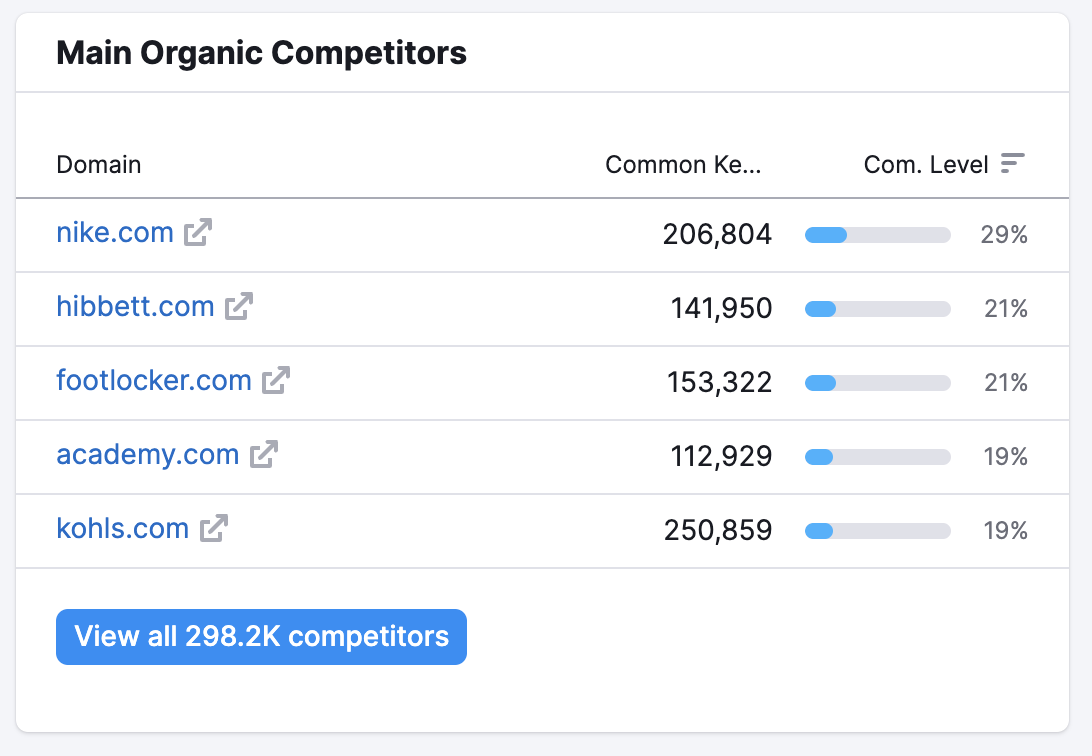
Clicking on any of those competitor domains will allow you to look at the organic keywords those sites are ranking for, a process which should reveal lots of insights into the kind of content your audience finds helpful:
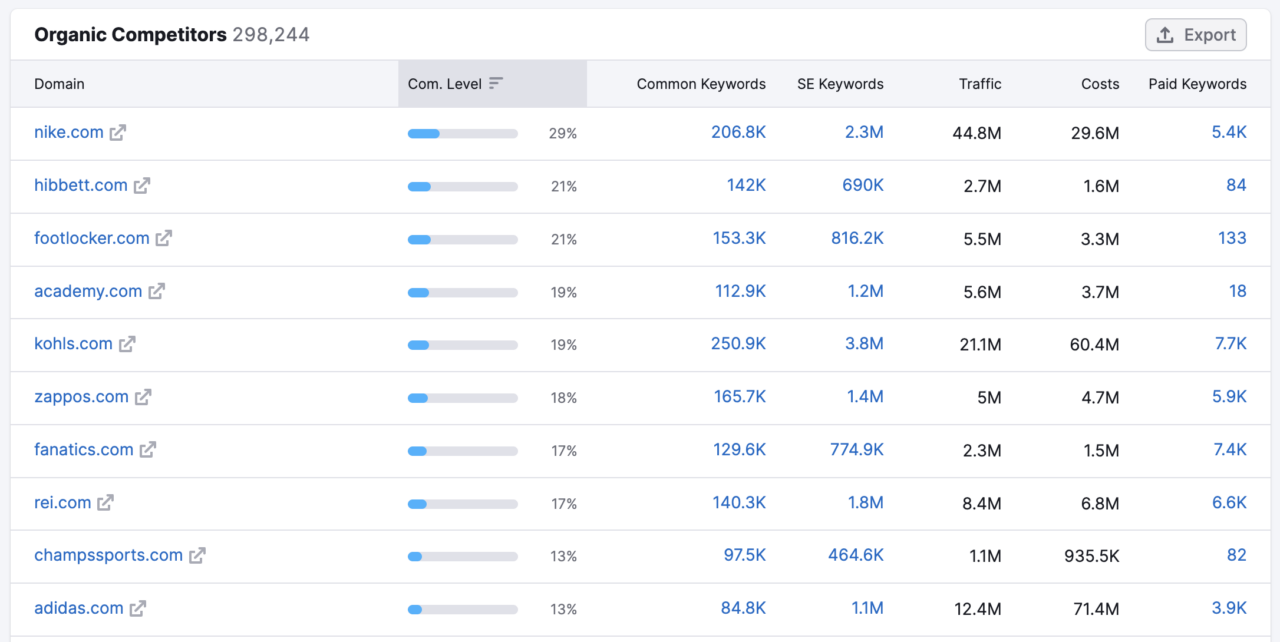
Before you move on, it also pays to go and check out some of that top-ranking content from your competitors, paying attention to the layout and format of their pages. This will give you some insights into the best way to format your own content to meet audiences needs.
2) Turn Your Idea List into Targeted Keywords
Next, take that list of content ideas and use it to identify the best keywords to target with your programmatic landing pages.
Sticking with the sporting goods example, perhaps you want to sell running shoes by creating high-ranking content relating to the term “best running shoes.”
Open a keyword research tool such as Ahrefs or the Semrush Keyword Magic Tool and search for that term:
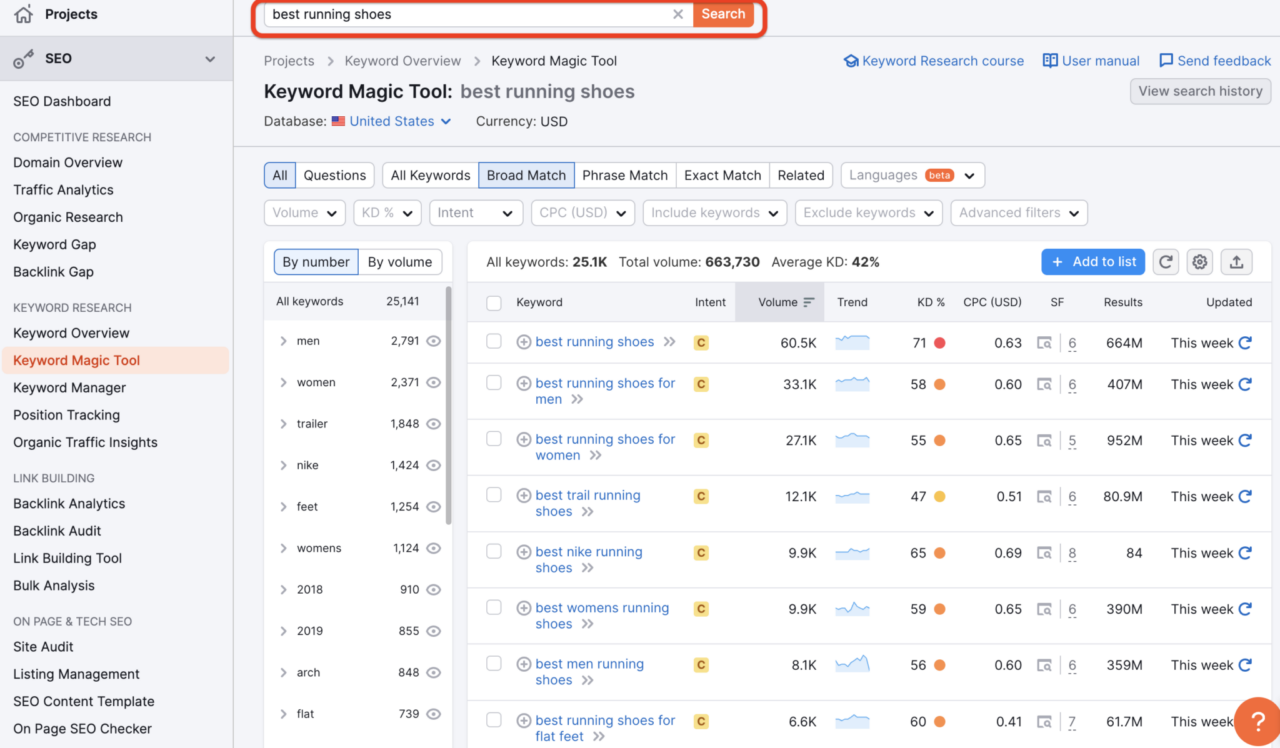
This gives you a whole list of possible keywords to target, along with the search intent behind them and their keyword difficulty.
In this example, most of the keywords have a commercial intent, which makes them perfect for programmatic SEO. However, you’ll also note that they have quite a high Keyword Difficulty score, which makes them unsuitable.
Don’t be dismayed, though, there’s an easy solution!
Click on the KD drop-down filter at the top, and select either Easy or, preferably, Very Easy, then tap Apply:
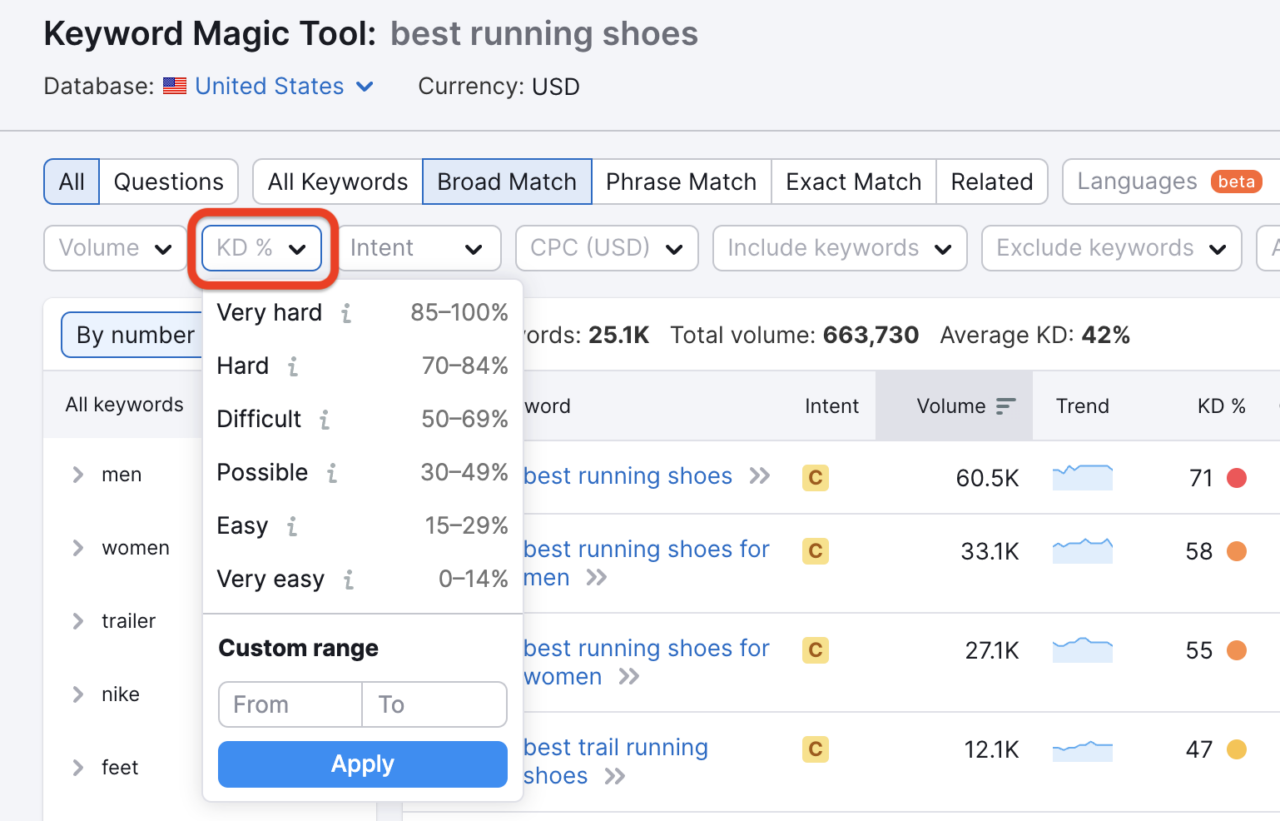
You now have a whole list of commercial intent keywords with very low keyword difficulty, making them prime candidates for pSEO.
3) Build Your Landing Page Template
Next, you need to create a master template that can be duplicated and repurposed to create similar landing pages for each unique keyword.
To do this, you need a landing page builder that supports programmatic SEO. This means that the builder should allow you to easily create and manage large numbers of landing pages, with options that make it simple to import large volumes of data into each page.
If you’re a WordPress user, a plugin like WPAllImport will tick all of those boxes and then some:
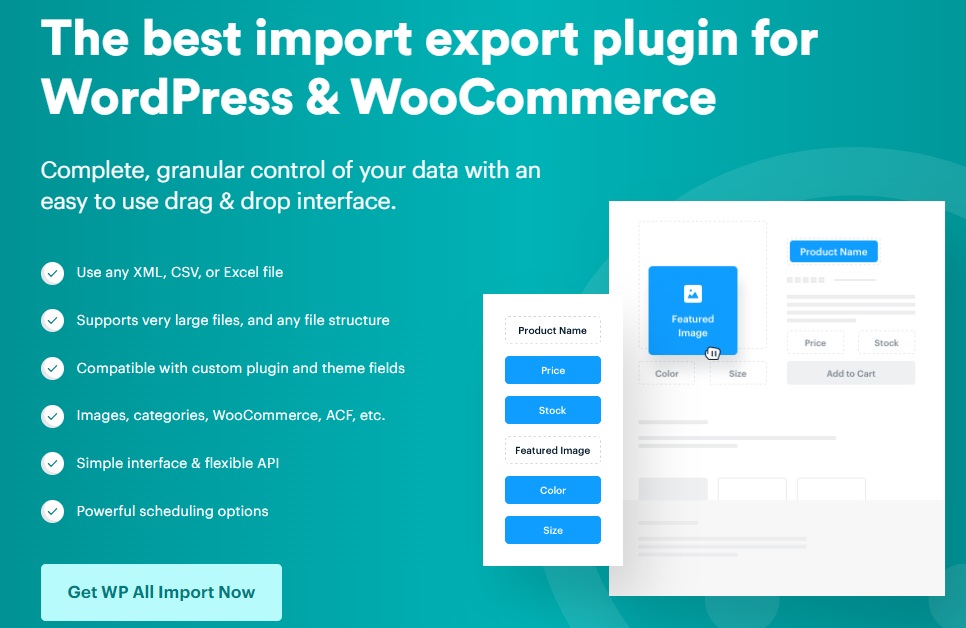
WebFlow and Landingi are also both among the best tools on the market for creating landing pages specifically for your programmatic SEO project:
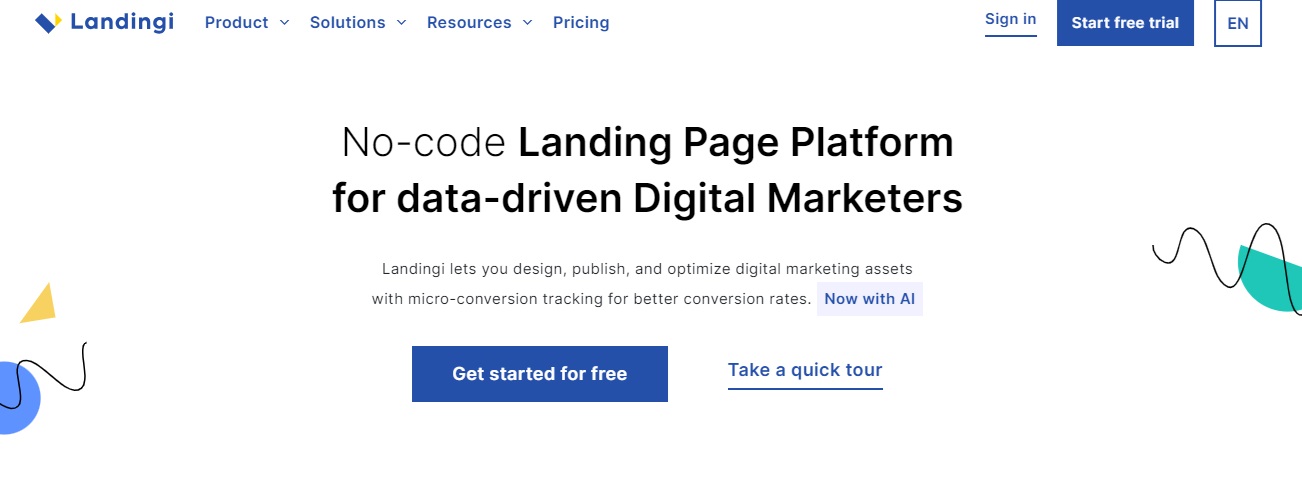
Whichever tool you decide on, your layout will depend on the type of content you’re creating.
If you’re going for those “best running shoes” lists, for example, your template may need a comparison chart, product images and reviews, whereas a marketplace or business directory site would require space for user generated content like business profiles.
4) Generate Your Content
Each keyword you’re planning to target with pSEO requires unique content imported into its own copy of your master template.
Make sure that your content is:
- Relevant to the target keyword
- Informative, engaging and well-written
- Unique and original
- Optimized for search intent
In other words, all the things you normally do to make your content stand out.
5) Sync Everything Together
Now that you’ve got your landing pages and content elements in place, it’s time to bring the two together.
To start, you’ll need a database that contains all the relevant information for each of your programmatic pages, including:
- Target keyword
- Page title
- Meta description
- Slug (URL)
- Content
- Author
You can create this using a basic spreadsheet, though you may find it easier to use Airtable, which is a cloud-based no-code database that makes it easy to create and manage your data:
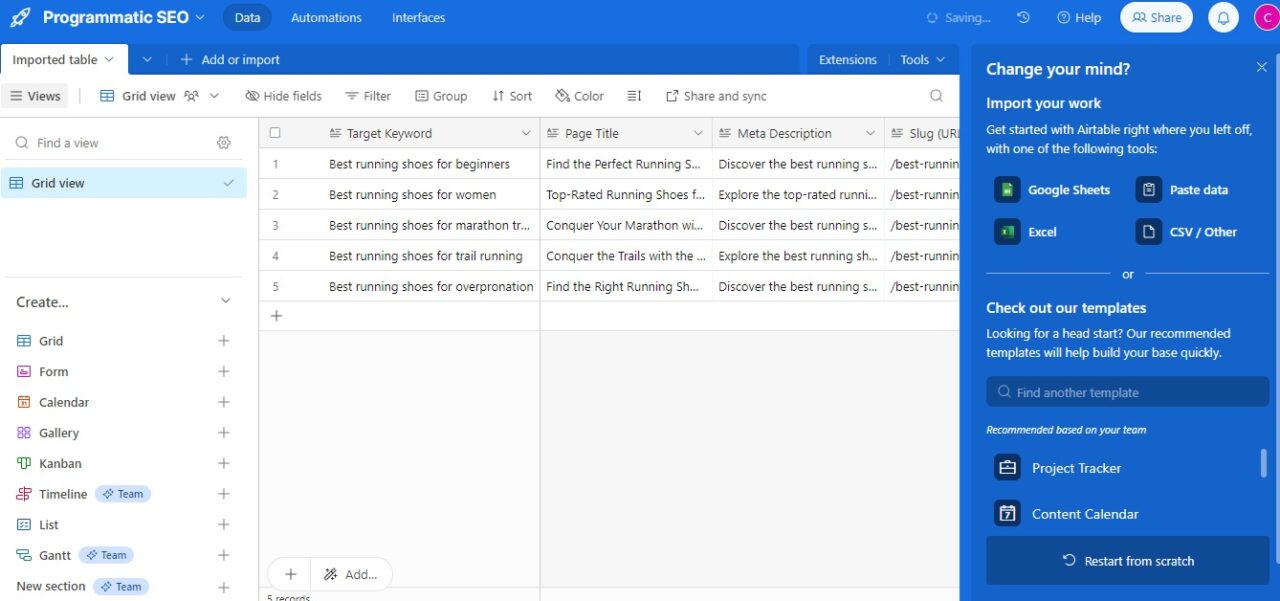
Once you have your database in place, you can use a tool like Zapier or Make (formerly Integromat) to connect your Airtable database to your landing page builder. This will allow you to automatically populate your landing pages with data from your database.
For example, you could use Zapier to set up a zap that automatically creates a new landing page for each new row in your Airtable database. The zap would then populate the landing page with the data from the Airtable database.
With that, all that’s left to do is monitor the effectiveness of your programmatic pages, keeping an eye out for what’s working and what isn’t so that you can continuously fine-tune for maximum success.
Last Word on pSEO
Programmatic SEO may still be in its infancy, but as the sheer volume of information on the web continues to grow, and as search algorithms continue to shift further in favor of content that delivers maximum reader value, expect to see more and more businesses using it to create high-ranking, high-converting landing pages at scale.
Although challenges such as avoiding keyword cannibalization and budgeting for essential programmatic SEO tools and resources certainly lie ahead, adapting to pSEO sooner rather than later can only benefit your business.
Not only does it give your business a competitive advantage, it can also help you to stay at the top of search results even as the roles of search and search engine optimization continue to evolve by quickly generating hundreds, if not thousands, of web pages containing genuinely helpful content.
If you’re ready to increase organic traffic to your website with programmatic SEO, Single Grain’s programmatic SEO experts can help!👇
The post What Is Programmatic SEO? appeared first on Single Grain.
